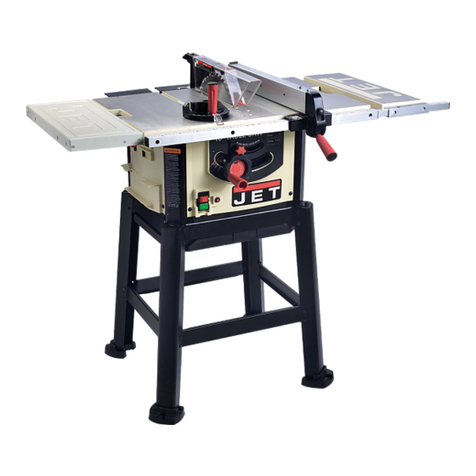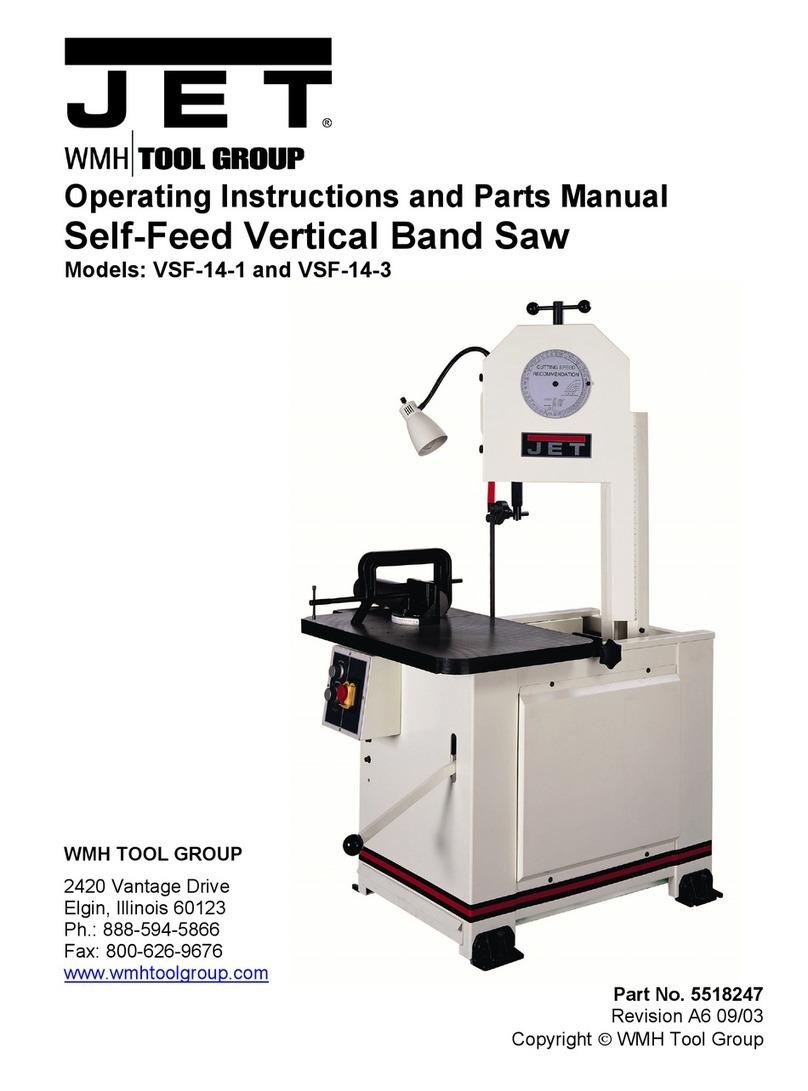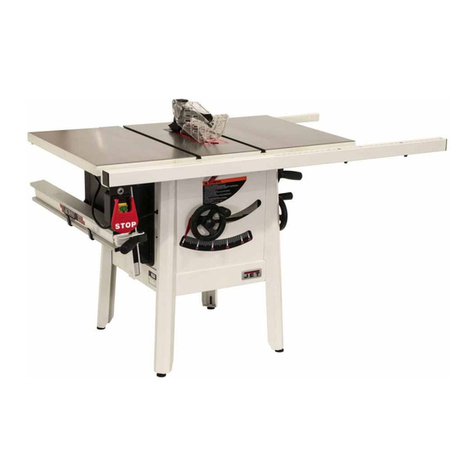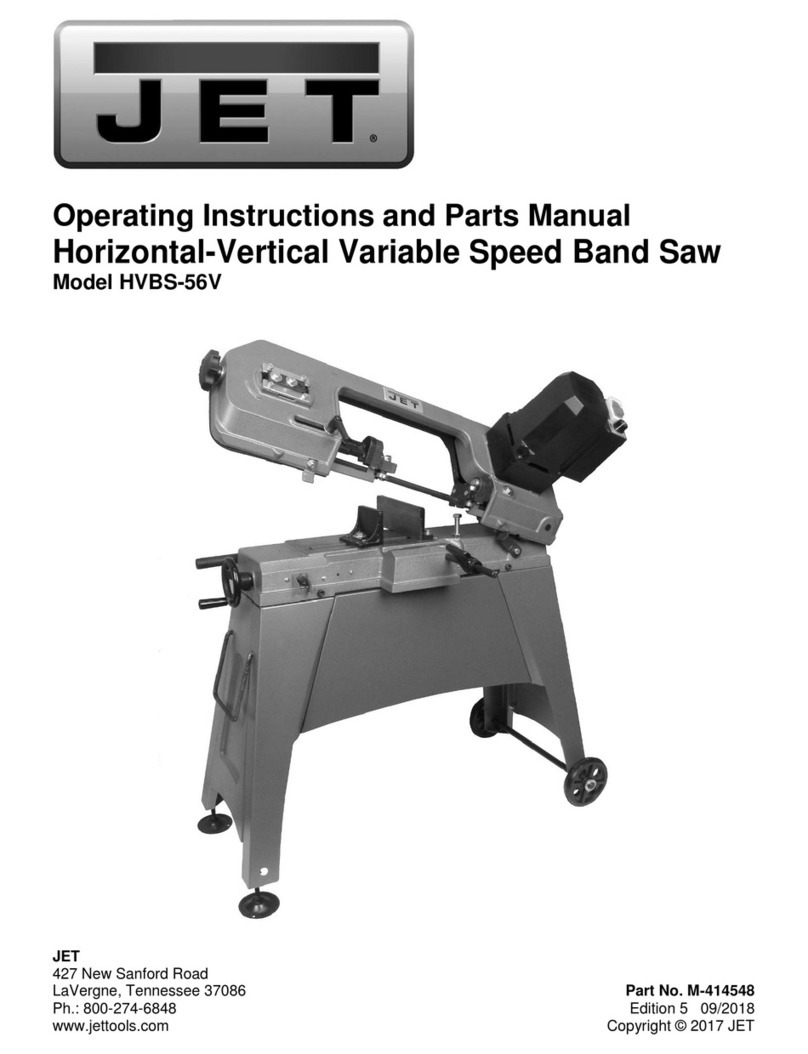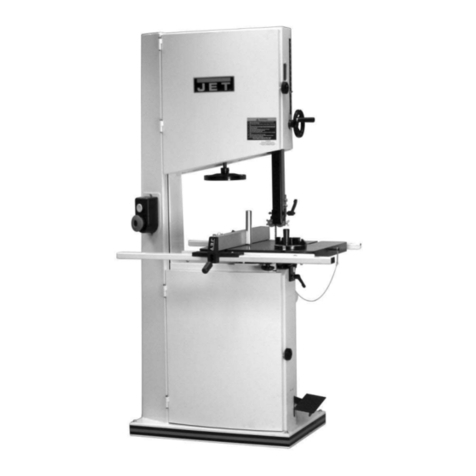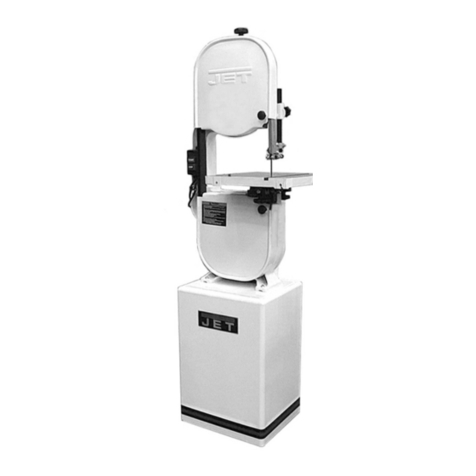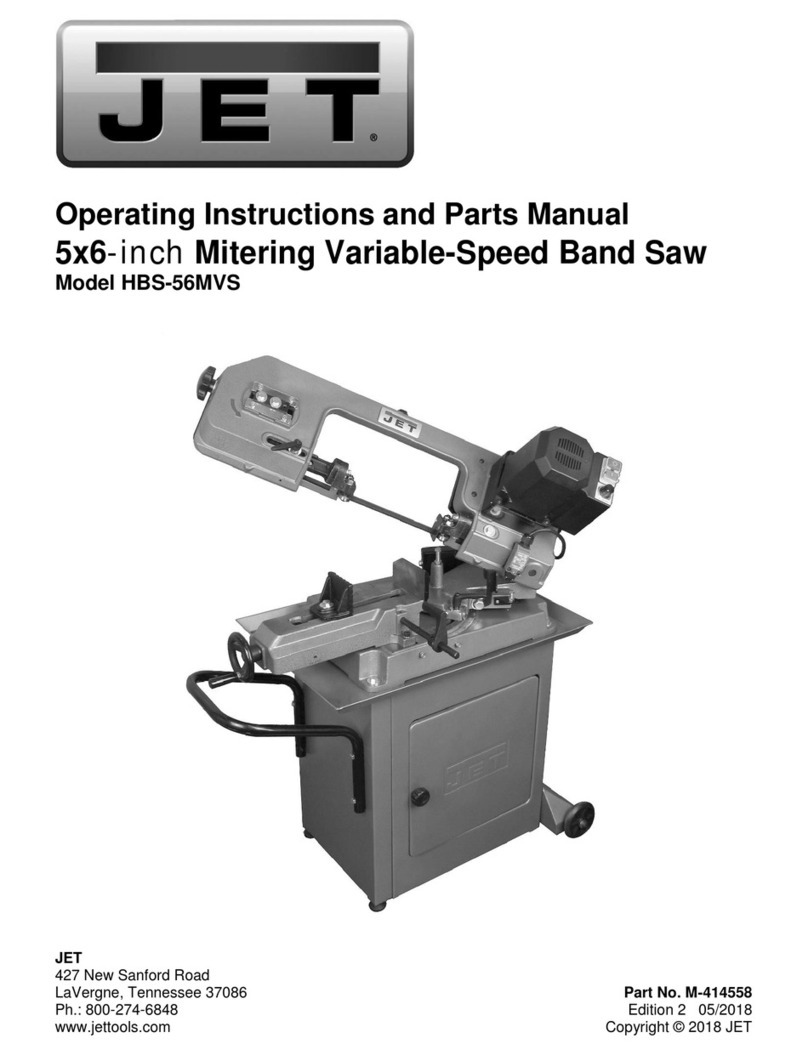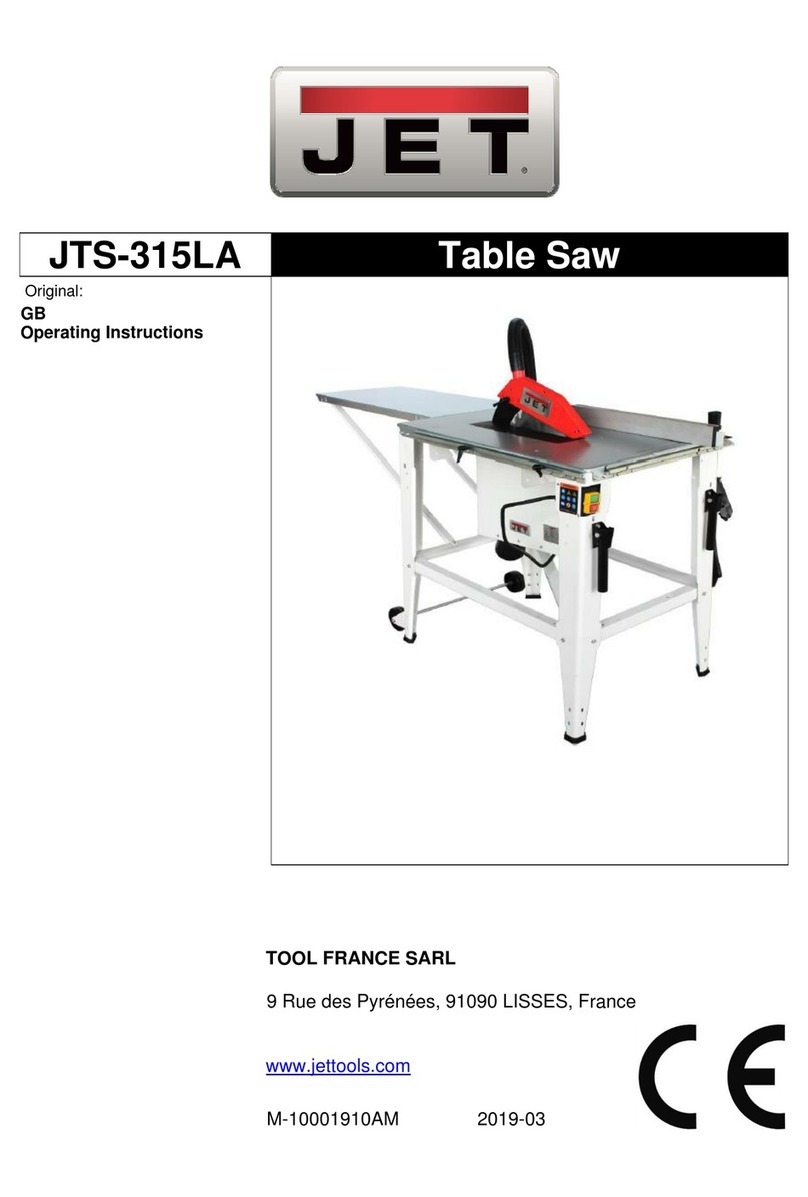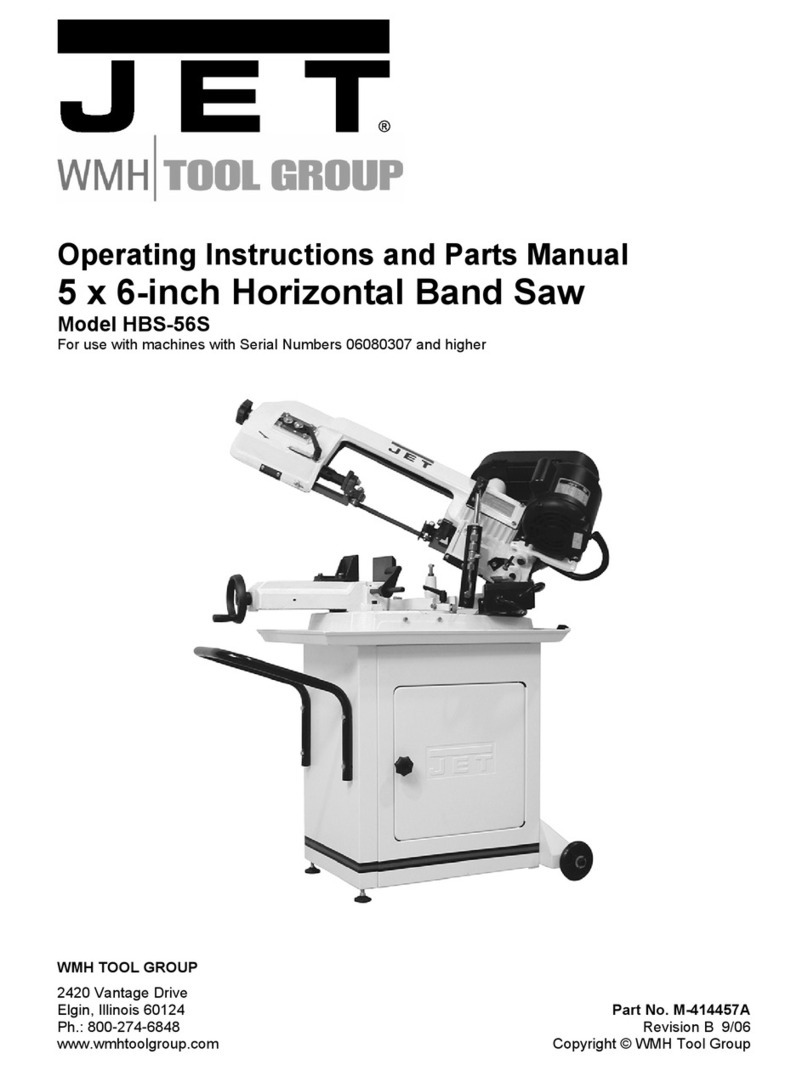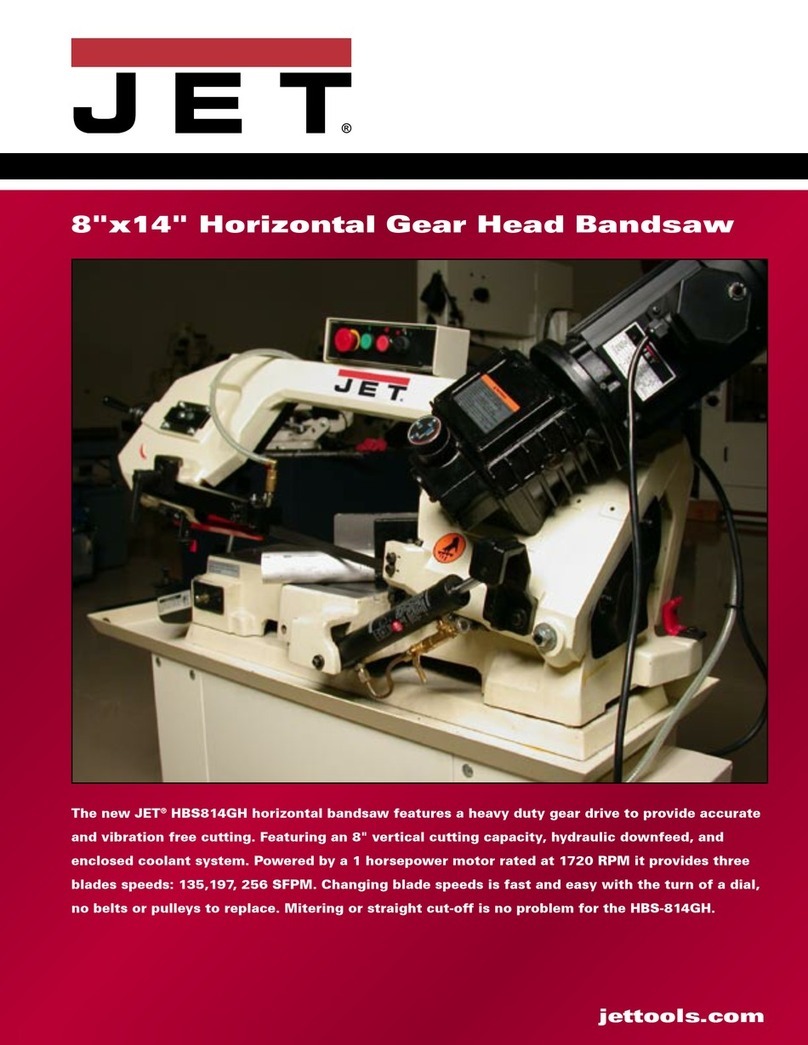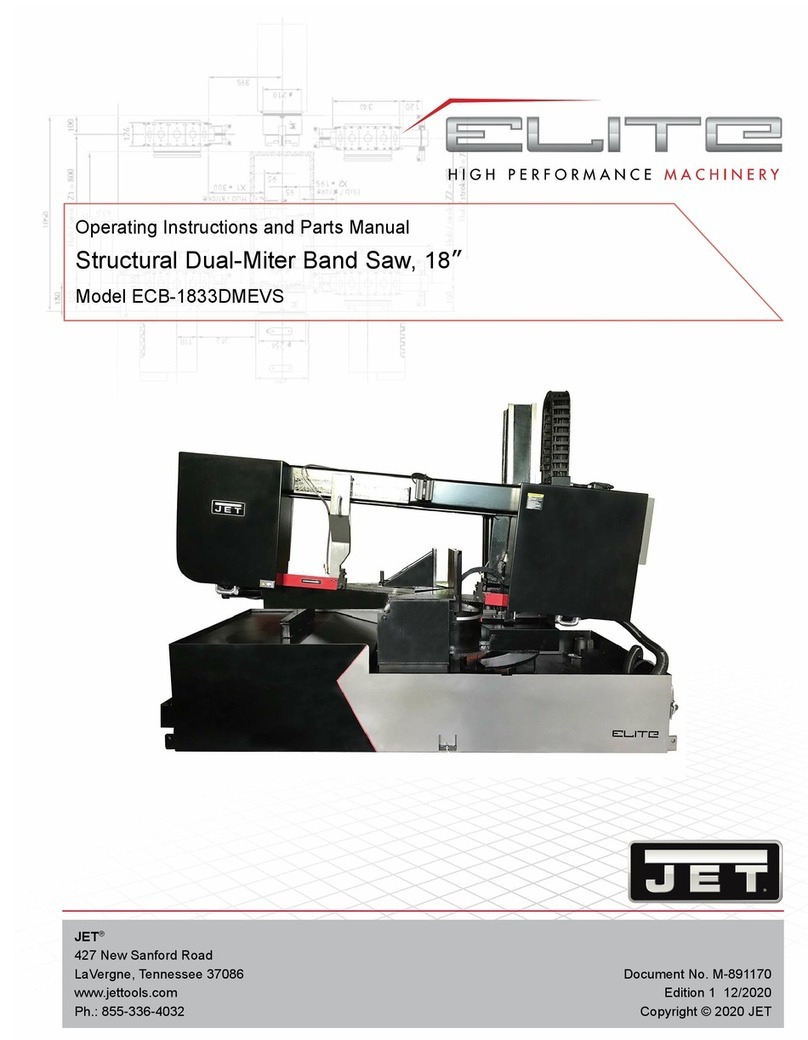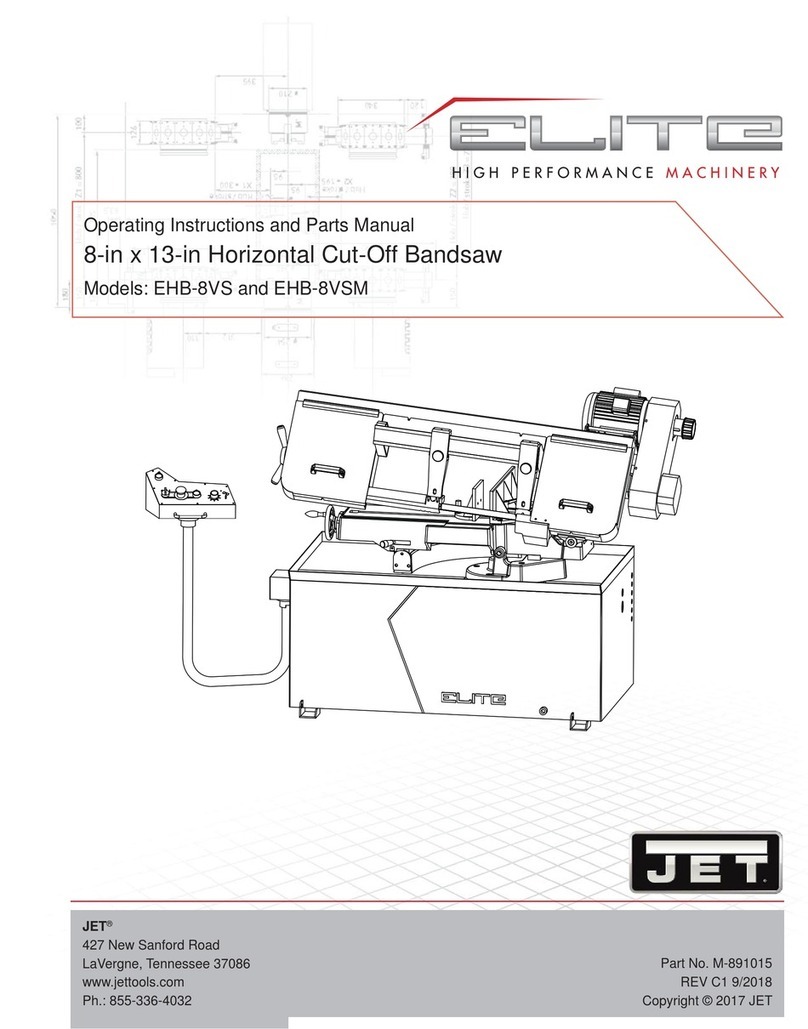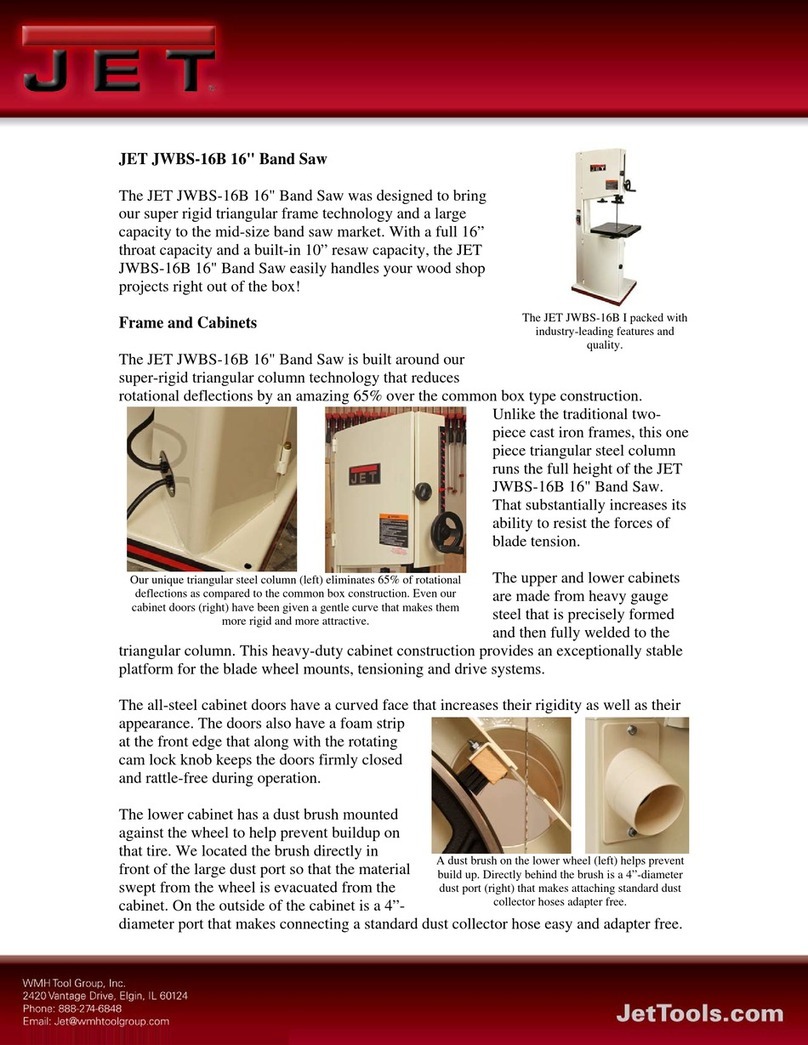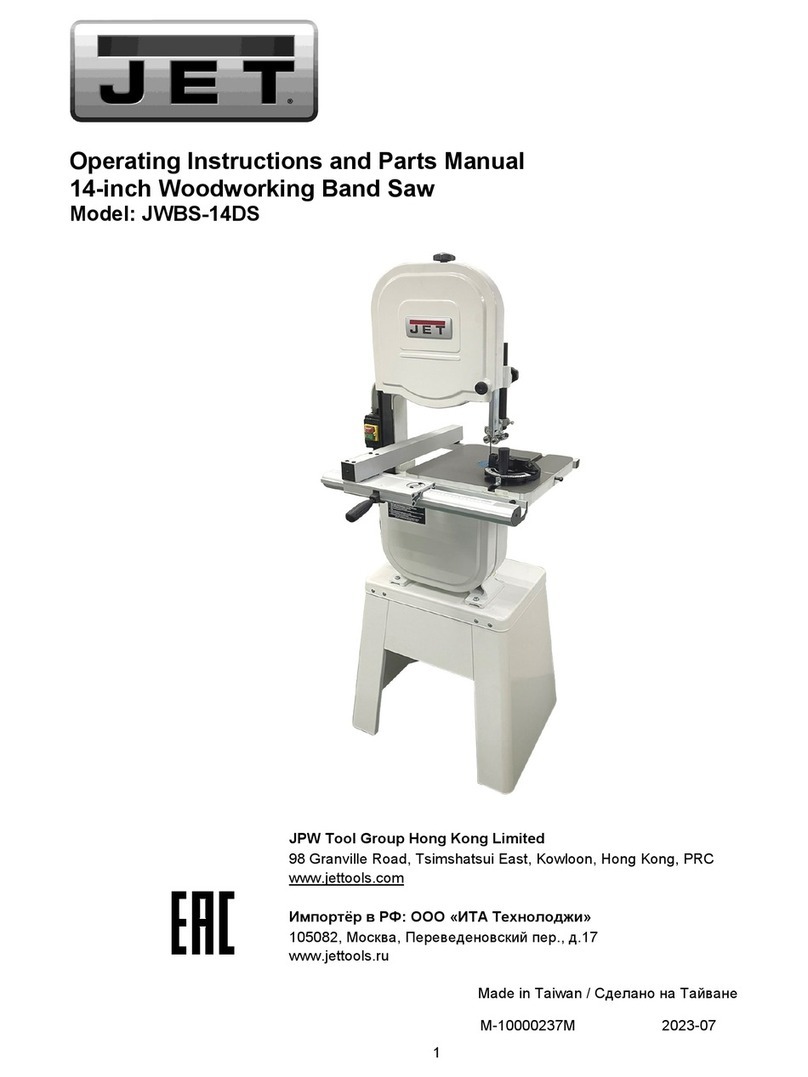
4
Read and understand the entire
instruction manual before attempting
assembly or operation.
Keep this operating instruction close
by the machine, protected from dirt
and humidity, and pass it over to the
new owner if you part with the tool.
No changes to the machine may be
made.
Daily inspect the function and
existence of the safety appliances
before you start the machine.
Do not attempt operations in this case,
protect the machine by unplugging the
mains cord.
Remove all loose clothing and confine
long hair.
Before operating the machine, remove
tie, rings, watches, other jewellery, and
roll up sleeves above the elbows.
Wear safety shoes; never wear leisure
shoes or sandals.
Always wear the approved working
outfit :
- safety goggles
- ear protection
- dust protection
Do not wear gloves while operating
this machine.
For the safe handling of sawblades
wear work gloves.
Observe the chapter “save operation”
in this manual.
Check the correct rotation of the
sawblade before operating the
machine.
Do not start cutting operation until
sawblade is at full speed.
Control the stopping time of the
machine, it may not be longer than 10
seconds.
Do not use side pressure to stop
rotating blade.
Insure that the workpiece does not roll
when cutting round pieces.
Use suitable table extensions and
supporting aids for difficult to handle
workpieces.
Always hold and guide the workpieces
safely during machining.
Pay particular attention to instructions
on reducing the risk of kickback.
The supplied raving knife must always
be used. Adjust the space to the
sawblade to be between 2 to 5mm.
Do not perform any operation
freehand.
Never reach around or over the saw
blade.
When ripping narrow workpieces
(<120mm) use as push-stick or push-
wood.
Always use crossfeed guide for cutting
off.
The use of dado-blades is not
permissible.
Make sure that small cut off
workpieces will not be caught and
thrown away by the rising saw blade
teeth.
Take care when slotting.
Remove cut and jammed workpieces
only when motor is turned off and the
machine is at a complete standstill.
Install the machine so that there is
sufficient space for safe operation and
workpiece handling.
Keep work area well lighted.
The machine is designed to operate in
closed rooms and must be placed
stable on firm and levelled ground.
Make sure that the power cord does
not impede work and cause people to
trip.
Keep the floor around the machine
clean and free of scrap material, oil
and grease.
Stay alert!
Give your work undivided attention.
Use common sense.
Keep an ergonomic body position.
Maintain a balanced stance at all
times.
Do not operate the machine when you
are tired.
Do not operate the machine under the
influence of drugs, alcohol or any
medication. Be aware that medication
can change your behaviour.
Keep children and visitors a safe
distance from the work area.
Never reach into the machine while it
is operating or running down.
Never leave a running machine
unattended. Before you leave the
workplace switch off the machine.
Do not operate the electric tool near
inflammable liquids or gases.
Observe the fire fighting and fire alert
options, for example the fire
extinguisher operation and place.
Do not use the machine in a dump
environment and do not expose it to
rain.
Wood dust is explosive and can also
represent a risk to health.
Dust form some tropical woods in
particular, and from hardwoods like
beach and oak, is classified as a
carcinogenic substance.
Always use a suitable dust extraction
device
Before machining, remove any nails
and other foreign bodies from the
workpiece.
Specifications regarding the maximum
or minimum size of the workpiece
must be observed.
Do not remove chips and workpiece
parts until the machine is at a
complete standstill.
Never operate with the guards not in
place –serious risk of injury!
Do not stand on the machine.
Connection and repair work on the
electrical installation may be carried
out by a qualified electrician only.
Always unwind any extension cords
fully.
Have a damaged or worn cord
replaced immediately.
Do not use the machine when the ON-
OFF switch does not operate correctly.
Make all machine adjustments or
maintenance with the machine
unplugged from the power source.
Use only sawblades according to
EN 847-1.
Never use sawblades made from High
Speed Steel (HSS).
Take care that the selection of the saw
blade depends on the material to be
cut.
Remove defective sawblades
immediately.
A worn table insert must be replaced.
3.3 Remaining hazards
When using the machine according to
regulations some remaining hazards
may still exist
The moving sawblade in the work area
can cause injury.
Broken saw blades can cause injuries.
Thrown workpieces can lead to injury
Tipping of the workpiece due to
insufficient support can lead to injury.
